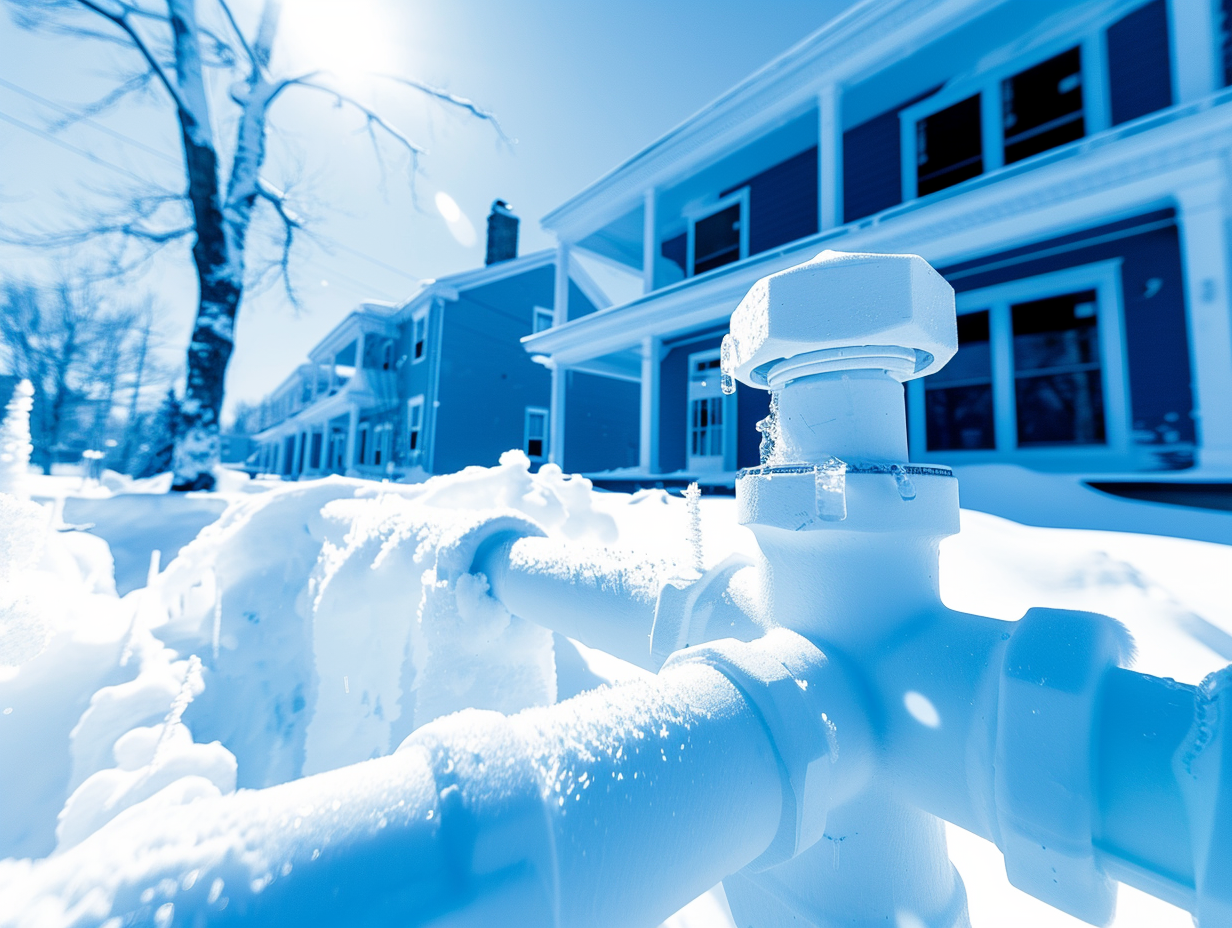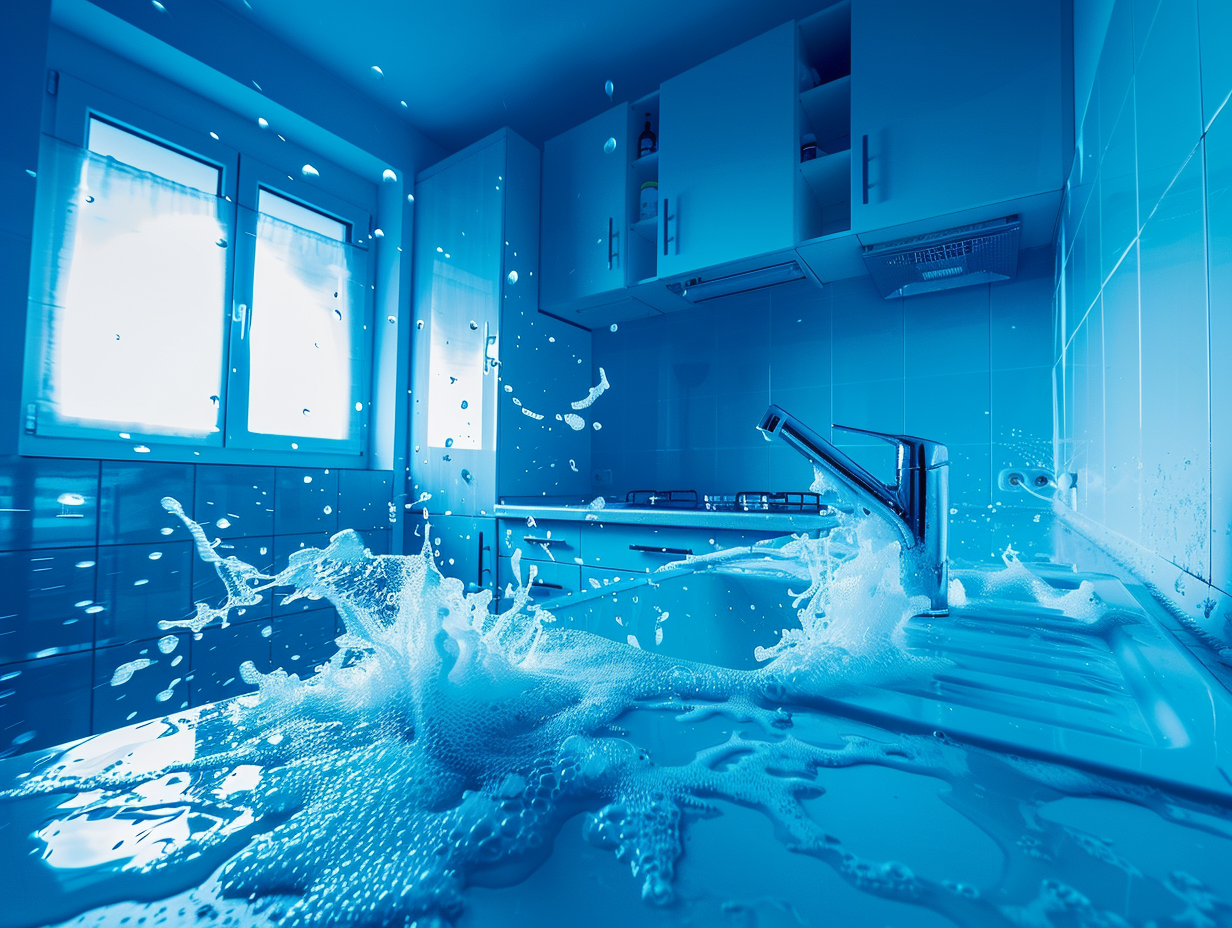A malfunctioning toilet can be a major inconvenience and disrupt your daily routine. Whether it's…

Does One Dripping Faucet Really Prevent Frozen Pipes?
Does One Dripping Faucet Really Prevent Frozen Pipes?
As winter approaches, homeowners often hear the advice to let their faucets drip to prevent their pipes from freezing. But does this simple method really work, and is it sufficient to safeguard your plumbing system during the colder months? In this blog, we’ll delve into the science behind dripping faucets, explore other effective methods to prevent frozen pipes, and offer comprehensive tips to protect your home from winter’s chill.
The Science Behind Dripping Faucets
How Freezing Pipes Occur
Water expands when it freezes, and this expansion puts pressure on your pipes. When the pressure becomes too much, pipes can crack or burst, leading to potentially severe water damage and costly repairs.
The Role of a Dripping Faucet
Allowing a faucet to drip keeps water moving through your pipes. Moving water is less likely to freeze compared to standing water. Moreover, a small amount of water flow can relieve the pressure that builds up between an ice blockage and the faucet, reducing the risk of a pipe burst.
How Effective Is It?
While a dripping faucet can indeed help prevent pipes from freezing, it’s not a foolproof solution. Its effectiveness largely depends on several factors, including:
- The severity of the cold: In extremely low temperatures, a dripping faucet alone might not be enough.
- The insulation of your pipes: Poorly insulated pipes are more susceptible to freezing.
- The location of the pipes: Pipes located in exterior walls or unheated areas like basements and attics are at higher risk.
Additional Methods to Prevent Frozen Pipes
Insulate Your Pipes
Properly insulating your pipes is one of the most effective ways to prevent them from freezing. Use foam pipe insulation, heat tape, or pipe sleeves to protect pipes in vulnerable areas.
Seal Gaps and Cracks
Inspect your home for gaps or cracks in walls, floors, and around windows and doors that could let in cold air. Seal these openings with caulk or weatherstripping to keep the cold out and the warmth in.
Keep Your Home Warm
Maintain a consistent indoor temperature, even when you’re not home. Set your thermostat to no lower than 55°F (13°C). Open cabinet doors under sinks to allow warm air to circulate around the pipes.
Let Warm Water Drip
If you choose to let your faucet drip, use warm water instead of cold. This can be more effective in preventing the pipes from freezing.
Disconnect Outdoor Hoses
Remove and drain garden hoses and shut off the indoor valves that control the outdoor faucets. Leave the outdoor faucet open to allow any remaining water to expand without causing damage.
Use a Space Heater
In particularly cold areas of your home, such as basements or attics, use a space heater to keep the temperature above freezing.
What to Do If Your Pipes Freeze
Despite your best efforts, pipes can still freeze. If this happens:
- Keep the Faucet Open: As the frozen area begins to melt, water will flow through the pipe, helping to melt the ice in the pipe.
- Apply Heat: Use a hairdryer, heating pad, or towels soaked in hot water to warm the pipe. Never use an open flame device.
- Call a Professional: If you cannot locate the frozen area, if the area is inaccessible, or if you are unable to thaw the pipe, it’s time to call a licensed plumber.
Conclusion
Letting a faucet drip can help prevent your pipes from freezing, but it should not be your only line of defense. Combining this method with other preventive measures such as proper insulation, sealing gaps, maintaining indoor temperatures, and using additional heating sources can provide a comprehensive strategy to protect your home’s plumbing system during winter.
At Aramic Total Renovations, we specialize in safeguarding homes against the elements. Whether you need help winterizing your pipes or dealing with a plumbing emergency, our expert team is ready to assist you. Contact us today for all your plumbing and home renovation needs, and ensure your home remains safe and warm throughout the cold season.



